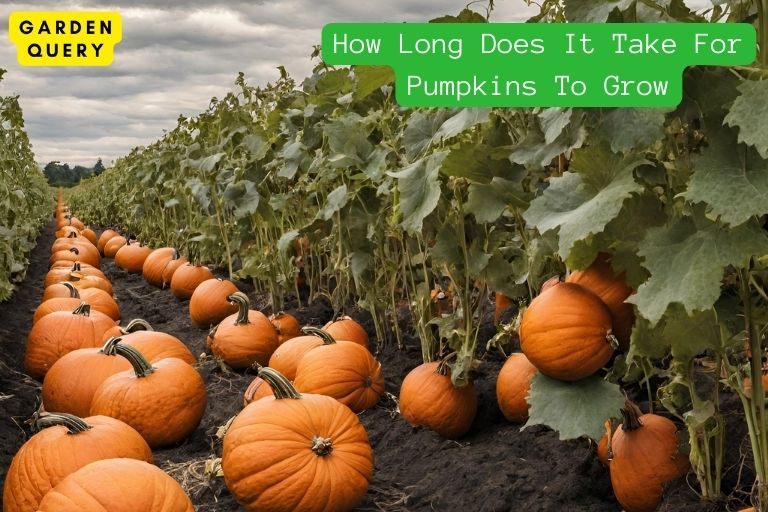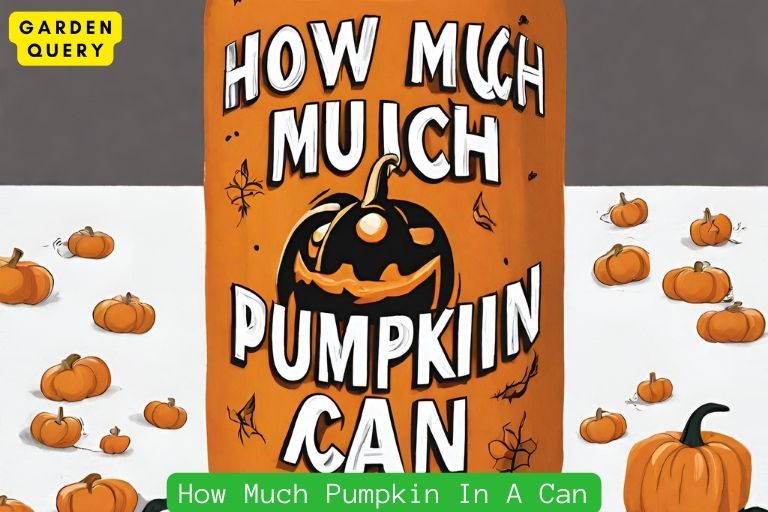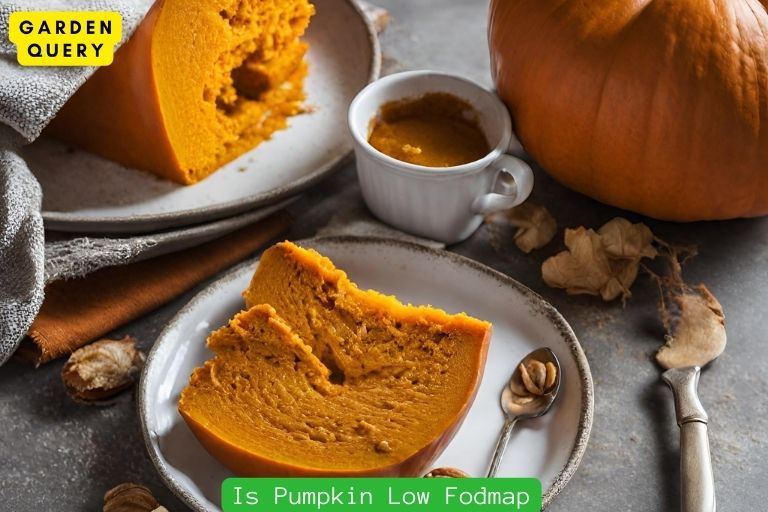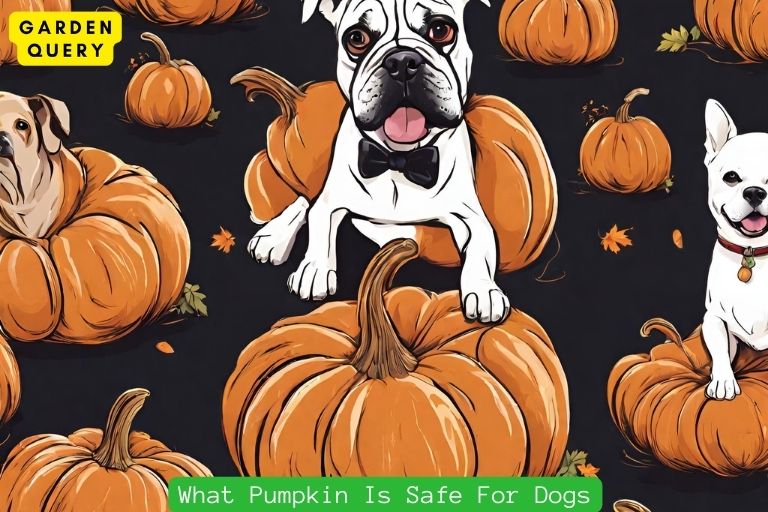How Are Pumpkins Pollinated?
Pumpkins are primarily pollinated by bees, transferring pollen from male flowers to female flowers, facilitating the fertilization process.
Pumpkin pollination occurs predominantly through the actions of bees, attracted to the flowers by their vibrant colors and nectar.
Male pumpkin flowers produce pollen, which is collected by bees as they visit the flowers for nectar.
When bees move to female flowers in search of more nectar, they inadvertently transfer this pollen, enabling fertilization.
Adequate pollination is crucial for pumpkin fruit development, ensuring the growth of healthy and fully formed pumpkins.
Other pollinators like butterflies and certain insects may also contribute to pollination, albeit to a lesser extent than bees.
Key Takeaway
The Importance of Pollination in Pumpkin Production
When it comes to pumpkin production, pollination plays a crucial role in ensuring a successful harvest.
Understanding how pumpkins are pollinated can help growers maximize their yield and produce high-quality fruits.

The role of pollination in pumpkin growth and development
Pumpkins are monoecious plants, which means they have separate male and female flowers on the same plant.
The male flowers produce pollen while the female flowers bear the fruit. Pollination is the transfer of pollen from the male flowers to the female flowers, leading to fertilization and fruit development.
Bees are the primary pollinators of pumpkins. As bees visit the flowers in search of nectar, they inadvertently pick up pollen from the male flowers and carry it to the female flowers.
This transfer of pollen is essential for the development of healthy pumpkins.
Pollination is vital for several reasons:
- Fruit development: Without pollination, the female flowers will not develop into pumpkins. Pollen contains the male genetic material necessary for fertilization, leading to the growth of the fruit.
- Seed production: Pollination is essential for the production of viable seeds. Each pumpkin contains numerous seeds, and these seeds play a vital role in the propagation of the plant for future generations.
Different methods of pumpkin pollination
While bees are the primary pollinators of pumpkins, there are other methods that growers can employ to ensure adequate pollination:
- Hand pollination: In situations where bee populations are low or unreliable, hand pollination can be done. This involves manually transferring pollen from the male flowers to the female flowers using a small brush or cotton swab.
- Attracting pollinators: Growers can create a pollinator-friendly environment by planting flowers that attract bees and other beneficial insects. Providing a diverse range of flowering plants throughout the growing season can help support healthy bee populations and increase pollination rates.
- Avoiding pesticide use during flowering: Pesticides can harm bees and other pollinators, leading to reduced pollination rates. By avoiding or minimizing pesticide use during the flowering period, growers can encourage bees to visit the pumpkin flowers and ensure successful pollination.
Pollination is a crucial process in pumpkin production. It is the transfer of pollen from the male flowers to the female flowers that allows for fruit development and seed production.
While bees are the primary pollinators for pumpkins, growers can also employ hand pollination methods and create a pollinator-friendly environment to enhance pollination rates.
By understanding the importance of pollination and implementing measures to support it, growers can ensure a successful pumpkin harvest.
Read More: Pumpkin
Natural Pollination Process in Pumpkins
Pumpkins are a beloved symbol of fall, gracing our tables as decorations and delicious pies.
But have you ever wondered how these vibrant orange fruits come into existence? The answer lies in the process of pollination.
The role of bees in pumpkin pollination
Bees play a crucial role in the pollination of pumpkins. As they visit flowers in search of nectar, they inadvertently transfer pollen from the male flower to the female flower.
This transfer of pollen is essential for fertilization and the development of pumpkins.
Male flowers produce pollen, while female flowers have a stigma, style, and ovary containing the ovules. When a bee lands on a male flower, it collects pollen grains on its body.
As the bee moves on to another flower, some of these pollen grains are rubbed off onto the stigma of the female flower, initiating the pollination process.
Not all bees are effective pollinators of pumpkins. Honeybees, specifically, are highly efficient due to their foraging habits and large populations.
These bees are attracted to the bright yellow color of pumpkin flowers and are known to carry a significant amount of pollen from one flower to another.
Other insects and animals involved in pumpkin pollination
While bees are the primary pollinators of pumpkins, other insects and animals also play a role in the process.
Butterflies, flies, and beetles are known to visit pumpkin flowers and can contribute to pollination. However, their impact is less significant compared to bees.
In addition to insects, some animals can also assist in pumpkin pollination. Birds, such as hummingbirds, are attracted to the bright colors of pumpkin flowers and may inadvertently transfer pollen as they feed on nectar.
Their contribution to pumpkin pollination is relatively minor compared to bees.
It’s worth noting that pumpkins can also undergo self-pollination. This means that a single flower can transfer pollen to its own stigma, leading to fertilization.
Self-pollination is less efficient and may result in smaller yields and less genetic diversity in pumpkins.
The natural pollination process of pumpkins relies heavily on the role of bees.
These small but mighty creatures transfer pollen from male flowers to female flowers, allowing for fertilization and the development of pumpkins.
Other insects and animals, such as butterflies and birds, can also contribute to pollination, albeit to a lesser extent.
Importance of pollinators in the pumpkin life cycle reinforces the need to protect and preserve these vital creatures in our environment.
So next time you enjoy a slice of pumpkin pie, take a moment to appreciate the incredible process that brought that pumpkin to your plate.
Read More: How Do Pumpkin Seeds Grow?
Artificial Pollination Techniques for Pumpkins
When it comes to the pollination of pumpkins, nature takes care of the process through the help of bees and other pollinators.
There are instances where artificial pollination techniques may be necessary.
Hand pollination methods for pumpkins
Hand pollination involves manually transferring pollen from the male flowers to the female flowers of the pumpkin plant.
This is typically done when there is a limited number of pollinators available or when the plant is not producing enough male flowers.
To begin the hand pollination process, identify the male flowers which have long, thin stalks and no visible fruit at the base.
Gently remove the petals of the male flower to reveal the stamen, which is covered in pollen. Next, locate the female flowers, which have a small fruit attached at the base.
The female flowers also have a stigma in the center, which is where Pollen needs to be transferred.
Using a paintbrush or cotton swab for pollination
One method of artificial pollination is using a paintbrush. Simply dip the brush into the pollen from the male flower and lightly brush it onto the stigma of the female flower.
Be sure to transfer the pollen gently to prevent damaging the flower.
Another technique involves using a cotton swab. Gently dab the cotton swab onto the stamen of the male flower to gather the pollen.
Then, carefully transfer the pollen onto the stigma of the female flower.
It is essential to perform hand pollination in the morning when the flowers are fully open, as this is when they are most receptive to pollination.
It is crucial to ensure that the male flowers are mature and producing enough pollen for successful pollination.
By manually pollinating pumpkins, you can increase the likelihood of successful fruit set and improve the overall yield of your pumpkin plants.
Monitor the progress of the pollinated flowers and keep an eye out for any signs of disease or pest infestation.
While pumpkins are typically pollinated by bees and other insects, there are situations where artificial pollination techniques may be necessary.
Hand pollination using a paintbrush or cotton swab can help ensure successful fruit set in pumpkins.
By understanding and implementing these techniques, you can increase the chances of a bountiful pumpkin harvest.
Read More: How Long Does It Take For Pumpkins To Grow?
Factors Affecting Pumpkin Pollination
When you think about pumpkins, you might envision a quintessential symbol of fall, carved into jack-o'-lanterns or used in delicious pies.
But have you ever wondered how pumpkins are pollinated? Understanding the factors that impact pumpkin pollination can help ensure a successful harvest and abundant pumpkin production.
Weather conditions and its impact on pumpkin pollination
Weather plays a crucial role in pumpkin pollination. Pumpkins are usually pollinated by bees, specifically honeybees and native bees.
Certain weather conditions can either hinder or enhance the pollination process.
- Temperature: Pumpkin flowers require a consistent temperature range of 70-90°F (21-32°C) for optimal pollination. Extreme temperatures, such as excessive heat or cold, can affect bee activity and decrease pollen transfer, leading to poor pollination.
- Humidity: High humidity can cause pollens to become sticky, making it difficult for bees and other pollinators to transfer pollen from the male to the female flowers. Adequate air circulation is essential to prevent excess humidity and ensure efficient pollination.
- Rain: While some rain is necessary for healthy plant growth, excessive rainfall can negatively impact pumpkin pollination. Rainfall can wash away pollen, making it less accessible for bees. Additionally, wet and damp conditions can promote fungal diseases that may damage the flowers, affecting their ability to be pollinated.
The importance of planting pollinator-friendly flowers near pumpkins
Planting pollinator-friendly flowers near your pumpkin patch is a simple yet effective way to enhance the pollination process.
Here’s why it matters:
- Attracting pollinators: By planting a variety of flowers that attract bees and other pollinators, you can increase the likelihood of these vital insects visiting your pumpkin flowers. Examples of pollinator-friendly flowers include lavender, borage, sunflowers, and zinnias.
- Diversifying pollen sources: Different flowers provide various types of pollen, and having a diverse range of flowers nearby can increase the genetic diversity of the pollen available to bees. This diversity can improve the overall health of the pumpkin plants and enhance pollination success.
- Extending the flowering season: By planting flowers that bloom at different times throughout the growing season, you can provide a continuous food source for pollinators. This extends their presence in your garden and increases the chances of successful pumpkin pollination.
Factors affecting pumpkin pollination is essential for a successful harvest.
By considering weather conditions and planting pollinator-friendly flowers, you can create an environment that attracts pollinators and enhances the pollination process.
Read More: How Do Pumpkin Plants Grow?
Common Pollination Problems in Pumpkins
Pollination is a crucial process in the life cycle of pumpkins. Without proper pollination, pumpkins may fail to develop or have inferior quality.
Common pollination problems in pumpkins can help you troubleshoot and ensure a successful harvest.
Incomplete pollination in pumpkins and its consequences
Incomplete pollination occurs when the female flower of a pumpkin plant is not properly fertilized by pollen from the male flower.
This can happen due to various reasons, including poor weather conditions, lack of pollinators, or a lack of viable pollen.
The consequence of incomplete pollination is the development of small, misshapen, or incomplete fruits.
These pumpkins may have undeveloped or missing seeds, and their size and shape can be distorted. Incomplete pollination can also lead to uneven ripening or premature fruit drop.
Identifying and troubleshooting pollination issues in pumpkins
To identify pollination issues in your pumpkin plants, look for the following signs:
- Lack of bees or other pollinators: Bees are the most effective and common pollinators for pumpkins. If you notice a lack of bees in your garden, consider planting pollinator-friendly flowers nearby to attract them.
- Absence of fruit set: If your pumpkin plants have plenty of flowers, but no fruits are forming, it indicates poor pollination. This could be due to a lack of viable pollen or inadequate transfer of pollen from male to female flowers.
- Misshapen or small fruits: If your pumpkins are developing irregular shapes or are smaller than usual, it could be a sign of incomplete pollination. This problem often results from a lack of pollen reaching the female flowers.
To troubleshoot pollination issues in your pumpkin patch, you can try the following:
- Hand pollination: If you notice a lack of pollinators, you can manually transfer pollen from male to female flowers using a small brush or cotton swab. Gently touch the stamen of the male flower to collect pollen and then transfer it to the stigma of the female flower.
- Attract pollinators: Create a pollinator-friendly environment by planting flowers that attract bees and other pollinators. These include sunflowers, lavender, and marigolds.
- Provide adequate moisture: Adequate moisture in the soil is essential for healthy pumpkin plants and proper pollination. Water consistently, keeping the soil evenly moist but not waterlogged.
Pumpkins have separate male and female flowers, and pollination mainly occurs through the transfer of pollen by bees or other pollinators.
By understanding the common pollination problems in pumpkins and taking proactive steps to address them, you can ensure a bountiful harvest of healthy and well-formed pumpkins.
- Best Therapists In Dallas - February 1, 2024
- Holly Willoughby Husband: Holly Willoughby’s Love Story - January 30, 2024
- Holly Willoughby Dress: 5 Style Secrets and 7 Must-Know Career Milestones - January 30, 2024





